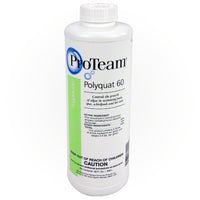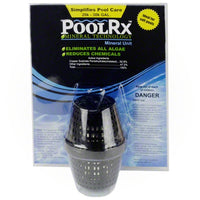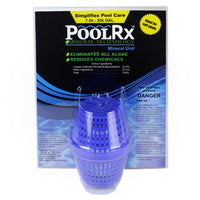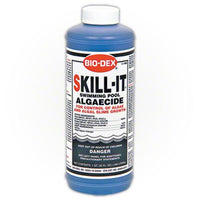Hot Tub Troubleshoot: My Hot Tub Water Smells Bad

Have you ever gone to soak in your hot tub only to be repelled by a foul odor emanating from it? Sometimes it’s sour and pungent, other times it’s moldy and smells like wet dog. No matter the offending scent, we have a few possible suggestions on how to help when your hot tub water smells bad.
A bad smelling hot tub is a sign bacteria is hiding somewhere in your spa, its equipment, or the cover. Let’s take a look at some of the possible stench offenders and what you can do to remedy the problem.
Common Culprits
The Water
Water chemistry is the first thing you should be watching. Because hot tubs are moist, warm, and humid, they become the ultimate breeding ground for bacteria. Keeping properly balanced water chemistry is key in avoiding this kind of unwelcome growth and ensuring your water stays clean and safe for anyone looking to enjoy it. Part of preventing this is testing the water on a regular basis and adjusting the chemistry as necessary.
If your water has a sharp, pungent smell, there’s a chance your pH is low. When your spa water’s pH is very high, it is often accompanied by a musty, stale odor. Your goal pH level should be between 7.4-7.6 so make sure you’re staying within that area.
The Fix
The first step in decontaminating unbalanced and smelly water is to hyperchlorinate which gives your water an extra dose of sanitizer to help kill the bacteria in it. To hyperchlorinate, you’ll bring the chlorine level in your spa to a high of at least 100 ppm using a granular chlorine. It’s best to pre-dissolve the chlorine in a five gallon bucket so the rough granules don’t affect your acrylic spa surface. Add the chlorine and then circulate the water on high speed for a half an hour with the cover closed and all jets turned on to ensure maximum circulation.
After shocking your spa, it’s a good idea to leave your cover open for a few hours to allow gasses to escape. Only do this when there’s a low risk of wind or rain so debris and other water chemistry affecting things aren’t getting into the water you worked so hard to adjust.
If you’re emptying your spa completely, refill the water and begin to adjust the chemistry immediately. Make sure that your pH and total alkalinity are balanced. Once you’ve done that, add enough granular chlorine (pre-dissolved, like before) to bring the level to 10 ppm. You’ll then allow the water to circulate for 8-12 hours.
Use a test kit or strips to check your chlorine levels. If you get a free chlorine reading then your decontamination was probably a success. If the test shows no chlorine reading, there’s a chance there is a high demand for chlorine and you’ll have to repeat the process.
When you get a test that comes back with a reading that shows a successful decontamination, continue by balancing your water with your sanitizer of choice and be sure to maintain all other levels.
The Plumbing
Bacteria can build a nice home inside of your spa’s plumbing, making it a problem that is a little more difficult to tackle. If your hot tub has been neglected for a while or it has been left almost empty but with water filling the pipes, there’s a good chance you have bacteria built up in your plumbing and filter. You’ll have to begin the process of decontamination immediately.
The perpetrator may be bio-film that has entered the plumbing. In extreme cases, chunks will break off and you may find brown or green remnants of it in your spa filter. More often than not, you won’t see bio-film as it likes to stay clinging and hidden in the equipment.
The Fix
If you’ve hyperchlorinated your water and that hasn’t seemed to help before, consider purging your system entirely. After circulating the hyperchlorinated water, add something like Spa Purge to your water—this will clean out any other contaminant built up in your plumbing, jets, or filtration system. After completing the purge, you’ll empty your spa water and complete a refill.
The Filter
Your hot tub filter serves to catch all the nasty debris and contaminants that get into your system. If you have a stench problem, that’s a good place to check. A filter is a prime location for bacteria and mold to build up and cause a bad smell.
The Fix
If your filter is in bad condition or more than a year old, it’s time to replace it. When a filter ages, oils and minerals can clog up the fabric, the fibers in that fabric begin to separate, and mold and bacteria get through instead of being filtered out. If your filter is still new, make sure you’re cleaning it as often as you should with filter cleaner to avoid bacteria buildup and ensure your filtration system is clean and able to do its job properly. For extra help, here’s a time table of hot tub maintenance that will take the guesswork out of when to clean what.
The Cover
Your hot tub cover exists to keep the bad things out of your water, but often times it’s the source of bad smells. When hot tub covers get water logged, it can become a breeding ground for bacteria buildup and can harbor mold. Though they’re designed to drain and not hold water, no cover lasts forever. Unsanitary water trapped in a warm environment is a formula for a smelly disaster.
The Fix
If you’ve had your cover for a few years, there’s a good chance you’ll need to replace it altogether. Covers aren’t meant to last as long as the spa it protects so consider a cover purchase if it’s seen better days.
But if it’s fairly new and you think it might be the cause of odor around your tub, remove it to an area away from your spa to determine where the smell is coming from. If you can find the source of the smell, you won’t have to go through the trouble of adjusting water chemistry if your cover just needs a good cleaning.
- Wait for a warm, sunny day with no clouds or rain and remove your hot tub cover. You want to prop it upright to drain so if it folds, make it stand up in a “V.” If it doesn’t, lean it against the wall of your house or garage somewhere in the sun.
- Unzip the openings of your cover that hold the foam inserts. This will allow air in and let the inserts dry. Use a broom or brush to knock out debris like dust or mildew that have accumulated in your cover. Remove the inserts if it’s evident the whole thing needs a good cleaning but only if you have to--they are rarely easy to remove or replace.
- Use a damp cloth to wipe down the inside and outside of your cover with a cleaning solution, preferably one purchased from your local pool and spa supply that is explicitly for that purpose.
- Use a keen eye to inspect your cover and check for any dark spots that may indicate mold. Spray disinfectant or a mixture of bleach and water on any evidence of mold. Allow it to sit for 15-20 minutes and then scrub, wipe, and rinse thoroughly.
- Keep your cover in the sun to allow to dry fully.
Remember—performing regular maintenance on your hot tub and constantly ensuring proper water chemistry is key in avoiding these kinds of issues. Even under a watchful eye, things can go awry. If your hot tub water smells, assess each of the above culprits and see if you can get your problem to go away.
Keeping on top of regular maintenance by testing and changing your water regularly will help you avoid water problems in the future.
Happy sniffing!






Comments
Leave a Comment